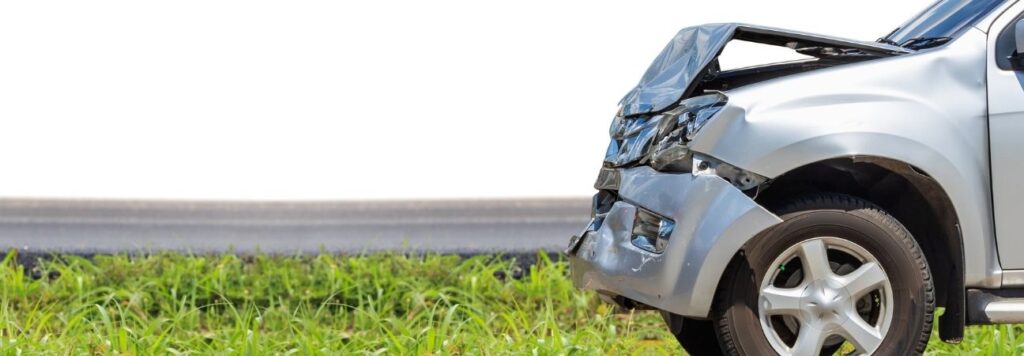Most people don’t notice their bumpers until something terrible happens to them. Accident damage or a dent are typical reasons people suddenly take note of their bumpers. But let’s be honest, does your car need a rear or front bumper?
Yes, your car needs both its rear and front bumpers. They minimise impact during an accident and reduce damage to property or life, which is probably why Australian road laws require them. Besides providing added safety, bumpers also improve aerodynamics and are useful for mounting lights and sensors.
There’s plenty to learn about bumpers, and this article will teach you everything you need to know. As you read through, you’ll discover just how vital bumpers are and whether it’s a good idea to drive without them.
Is a Front Bumper Just Cosmetic?
No, neither the front bumper nor the rear bumper on any car, regardless of make or model, is a purely cosmetic feature.
The bumper plays several vital roles, it's worth noting that one of those reasons is indeed cosmetic. In other words, bumpers play a role in a car's overall aesthetic design.
Firstly, auto manufacturers design front and rear bumpers to match a car’s look. However, car owners can also modify how those bumpers look to suit their style and preference.
Let’s say, you want to change a bumper’s colour—you can do that by painting or wrapping it. You can also buy aftermarket bumpers with different styles and attach them to the vehicle.
Of course, removing a car’s front or rear bumper will expose the car’s body and instantly make it look ugly. It’s the bumper that gave it its well put-together look in the first place.
Still, bumpers aren't just cosmetic features.
The following section will explain to you all the functions front and rear bumpers serve.
What Is the Function of Front and Rear Bumpers?
Here are the many functions played by the front and rear bumpers of your vehicle, no matter how they appear cosmetically:
1. Prevent Contact with the Car Body
One of the main functions of any bumper is to prevent contact with the vehicle's body, whether it’s something hitting your car or you accidentally bumping against a wall.
When those kinds of accidents happen, the bumper acts as the first layer of protection against impact. Of course, I don’t need to tell you that a damaged bumper is generally easier to deal with than direct damage to a car’s frame.
A bumper offers the most protection when the collision is minor. A small bump might scratch or crack the bumper but never reach the car’s body underneath.
However, bumpers aren’t meant to protect against major collisions.
2. Cushion Shock and Absorb Energy
Aside from preventing contact with the vehicle's body, bumpers cushion the shock and absorb some energy from the impact. So even if the collision is hard enough to damage the car, the bumper at least reduces the severity of that impact.
It reduces not only the damage to the vehicle’s frame but also the impact on the people inside the car.
3. Protect Pedestrians
It works the other way, too. Bumpers also protect pedestrians by preventing direct contact with the car’s body. That can be lifesaving if the collision involves a human being.
The amount of force felt by the pedestrian is significantly reduced, thereby minimising impact or damage to them.
Even a tiny bump against your car could cause severe injuries without a bumper.
4. Improve Aerodynamics
Bumper designs, particularly front bumpers, help in a car's aerodynamics, referring to how air flows around a car when it's moving.
Improving aerodynamics is crucial to fuel efficiency, and the design of a front bumper plays an important role in all that.
5. Mount Lights and Sensors
Last but certainly not least, you’ll also find that many manufacturers use bumpers to mount lights and sensors.
Some of the most common examples include fog lights on front bumpers and reverse sensors on rear bumpers.
By attaching these and other components onto the bumper, manufacturers use space on the bumper that would otherwise go wasted.
Which Is Stronger: The Front or Rear Bumper?
Answering this question is a little tricky. That's because bumpers on passenger vehicles aren't meant to be strong or weak, per se. Instead, they're purposely designed to collapse and crumple when experiencing impact.
In doing so, the bumper absorbs the force from that impact and prevents much of it from damaging the rest of the vehicle. More importantly, it minimises injuries to people in the car.
However, that’s different in the case of metal bumpers typically found on heavier vehicles. For example, the Nissan Xterra front bumper is made from solid metal, which is ‘strong’ by traditional standards and offers plenty of protection from the front.
That’s similar to the rear bumper for the Toyota Tacoma, made from aluminium and steel. It offers better protection against impacts from the rear.
However, metal bumpers have one significant drawback: they're incredibly heavy. That's why you won't find metal bumpers on regular passenger vehicles unless they're an aftermarket add-on.
Bottom Line: Does Your Car Need Front and Rear Bumpers?
Yes, your car needs front and rear bumpers because they protect your vehicle, its occupants, and other road users against impact in road accidents.
Sure, the car will still function even without bumpers, but driving in that condition significantly increases your risk of damage and injury.
On top of that, local road laws require you to have both bumpers on your car. So, driving without them could land you in trouble.
The good thing about bumpers is they're easy to find, and you can always buy them second-hand. So whether you're looking for a Bronco front bumper or an F250 front bumper, you must check the CarpartAU Marketplace. You’ll find excellent deals on used parts for all vehicle models, including yours!
By Ray Hasbollah

